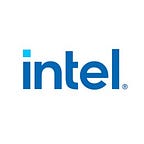Intel MWC Barcelona Blog: SRv6 Mobile User Plane (SRv6 MUP) Technology Demo
Author(s): Ed Doe, Vice President and General Manager, Switch and Fabric Group, Intel Corp.
Using SRv6 to Make 5G Networks More Flexible
Edge computing, network slicing and low latency services are long-promised 5G capabilities that are just now being enabled by the transition to standalone 5G networks. To make this happen at a massive scale, one of the options for 5G and next generation networks is the benefit of moving from session-based packet routing to IP-based packet routing.
To show how this can be done using segment routing on IPv6 (SRv6), SoftBank, the first Japanese mobile network operator (MNO) to offer 5G services, collaborated with Intel and Arrcus to demonstrate its vision of an SRv6 mobile user plane (SRv6 MUP) based network.
A proof of concept (PoC) of this new SRV6 MUP technology is on display in Intel’s virtual booth at the Intel MWC Barcelona “Built for Wonderful” webpage.
Improving on Legacy Circuit Switching Architectures
Legacy mobile networks were built using a packet switched network overlaid on a circuit switch / session-based network. Moving to a packet-switched only network has the potential to bring the flexibility to support multi-access edge computing (MEC) for user planes that are closer to the customer, resulting in lower network latency.
Packet-switched networks are also advantageous for enabling network slicing which requires orchestration of packet flows across the radio access network (RAN), core network and transport network.
By creating an SRv6 segment routing domain (see Figure 1) within the 3GPP-specified 5G network, SRv6 MUP can provide the environment for these 5G features — and that’s what the SoftBank/Intel/Arrcus MWC demonstration shows.
SRv6 Provides Central Network Control
SRv6 segment routing technology is based on the IPv6 forwarding plane and delivers software-defined networking features including traffic engineering and traffic steering.
A SRv6-enabled network operating system (NOS) running on switches and routers in the network creates the SRv6 domain where packets are forwarded based on network segments that are set up to avoid congestion. A packet enters an SRv6 domain through an ingress node and exits through an egress node. In between, the packet is forwarded by transit nodes along a predefined path of up to 16 segments. These nodes can be switches, routers or other source routing-based network devices. The segments can be changed by the controller based on network dynamics. In this way, SRv6 can be used to steer traffic in certain parts of the network.
SRv6 Powers the Mobile User Plane
The resulting solution is shown in detail in the MWC demo video. As shown in Fig. 2, the SRv6 network domain is created using the Arrcus ArcOS NOS. ArcOS runs on a switch using the Intel® Tofino™ programmable Ethernet switch ASIC to provide MUP gateway (MUP-GW) GTP-U to SRv6 translation for packet processing and forwarding to the 5G core. ArcOS is also running on the MUP-Controller (MUP-C) server powered by a 2nd Gen Intel® Xeon® Scalable processor and the MUP provider edge (MUP-PE) switches. MEC traffic is simulated using a 2nd Gen Intel Xeon Scalable processor-based MEC server (MEC Server).
The MWC PoC demo simulates performance in an SRv6 network with both the MUP controller disabled and enabled to show performance differences. Without the MUP, the packet goes hop-by-hop through the network based on the commands it receives at each hop. This adds latency to the network. But when the MUP is enabled, traffic is forwarded along the network segments more efficiently with low latency. This is demonstrated by watching the data flows in the PoC video.
Summary — Advancing Large Scale Distributed Computing for 5G and Beyond
SRv6 MUP is one of the technology options that enables large scale MEC-based distributed computing to support low latency, and brings improved network agility for network slicing for 5G networks and beyond. The MWC PoC demo shows how Softbank’s SRv6 MUP network design can be used to inject IP routing into a 5G network to add the flexibility, efficiency, and throughput to enhance large scale distributed functionality using SRv6.
For more information, see SoftBank Press Release: SoftBank Corp. Succeeds in Developing SRv6 MUP Technology to Implement MEC and Network Slicing Affordably at Scale
Notes and Disclaimers:
- Performance varies by use, configuration and other factors. Learn more at www.Intel.com/PerformanceIndex
- Performance results are based on testing as of dates shown in configurations and may not reflect all publicly available updates. No product or component can be absolutely secure. Your costs and results may vary.
- Intel technologies may require enabled hardware, software or service activation.
- Intel does not control or audit third-party data. You should consult other sources to evaluate accuracy.
- © Intel Corporation. Intel, the Intel logo, and other Intel marks are trademarks of Intel Corporation or its subsidiaries. Other names and brands may be claimed as the property of others.
